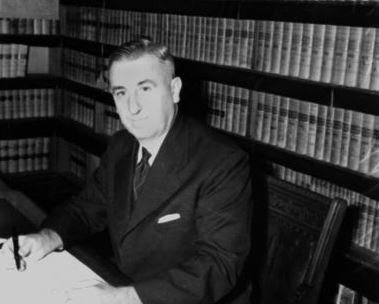By Jeremy Sollars
Who says you don’t learn anything useful watching Netflix?
I recently enjoyed the Netflix series ‘Toyko Trial’, based on the Allied court which convened in Japan at the end of the Second World War to try senior members of the Japanese political and military leadership for war crimes under international law, similar to the post-war Nuremberg trials in Germany.
I was a bit familiar with Nuremberg but knew next to nothing about the trial in Japan, other than recalling that Tojo and a number of others went to the gallows as a result, or served varying terms of imprisonment.
As well as being of general historical interest – and the type of series I will admit to ‘binge-watching’ (allright, same goes for Designated Survivor) – I discovered an albeit small but notable Warwick link.
The panel of judges in Tokyo was made up of representatives of the Allied and related countries – including Britain, the US, France, the Soviet Union, the Netherlands, India, the Philippines – and New Zealand and Australia. And it was the Australian – William Flood Webb – who was the presiding judge for most of the trial from 1946 to 1948. I say ‘most’, as Webb was recalled to Canberra part way through to sit on the High Court case involving Chifley’s proposed nationalisation of the banks, after which he returned to Tokyo.
The series highlighted the significant differences of opinion between the judges on the panel as to their task and their interpretation of international law, and the sentences applied to the defendants. As the presiding judge, Webb had to navigate his way through those differences and steer the trial to its conclusions, requiring all of his accumulated judicial experience and immense critical thinking. There was tension between a couple of different camps of judges and Webb himself – and between Webb and General MacArthur – but if you haven’t watched the series I won’t be a spoiler.
Curious to know more about Webb, I Googled him. It turns out he spent part of his childhood in the Warwick area and attended St Mary’s School, where his academic ability was first realised and encouraged to flourish.
Webb came to Warwick by family turns. According to the Australian Dictionary of Biography Webb was born in 1887 in South Brisbane, the third of five children of William Webb, an English-born storekeeper and his wife Catherine Mary, née Geaney, from Ireland. Webb’s three brothers died in infancy and his mother in 1891. The following year William Snr married Catherine’s sister Bridget and they had three children of their own. In 1894-1897 Webb attended St Kilian’s school at South Brisbane but when his father died in 1898, Bridget took the children to the home of her sister Margaret and her husband Martin Crane – as the Dictionary of Biography puts it – “on their sheep-property near Warwick”.
“William attended St Mary’s convent school, Warwick, conducted by the Sisters of Mercy,” his biography states.
“Recognizing his ability, his teachers, notably Mother Kevin and Sister Mary Vincent, encouraged him and gave him extra tuition; he won a State scholarship.”
Webb went on to become a Queensland public servant and a law student. Admitted to the Bar in 1913 he first worked in the Crown Solicitor’s Office and as public defender, and in 1917 became Crown Solicitor and secretary of the Attorney-General’s Department.
Under Premier T J Ryan – whose statue graces the intersection of Palmerin and Grafton Streets – Webb became Solicitor-General of Queensland and later a judge of the Supreme Court of Queensland and President of the Court of Industrial Arbitration. He was knighted in 1942 and around that time became Chairman of the Australian Industrial Relations Council and later, as noted above, a High Court judge, retiring in 1958. Webb died in 1972 survived by four daughters and two sons.
• My question to readers is – does anyone know the whereabouts of the Crane property “near Warwick” where William Flood Webb spent some of his formative childhood years? If you can enlighten me and other readers please feel free to email – jeremy.sollars@freetimes.com.au







